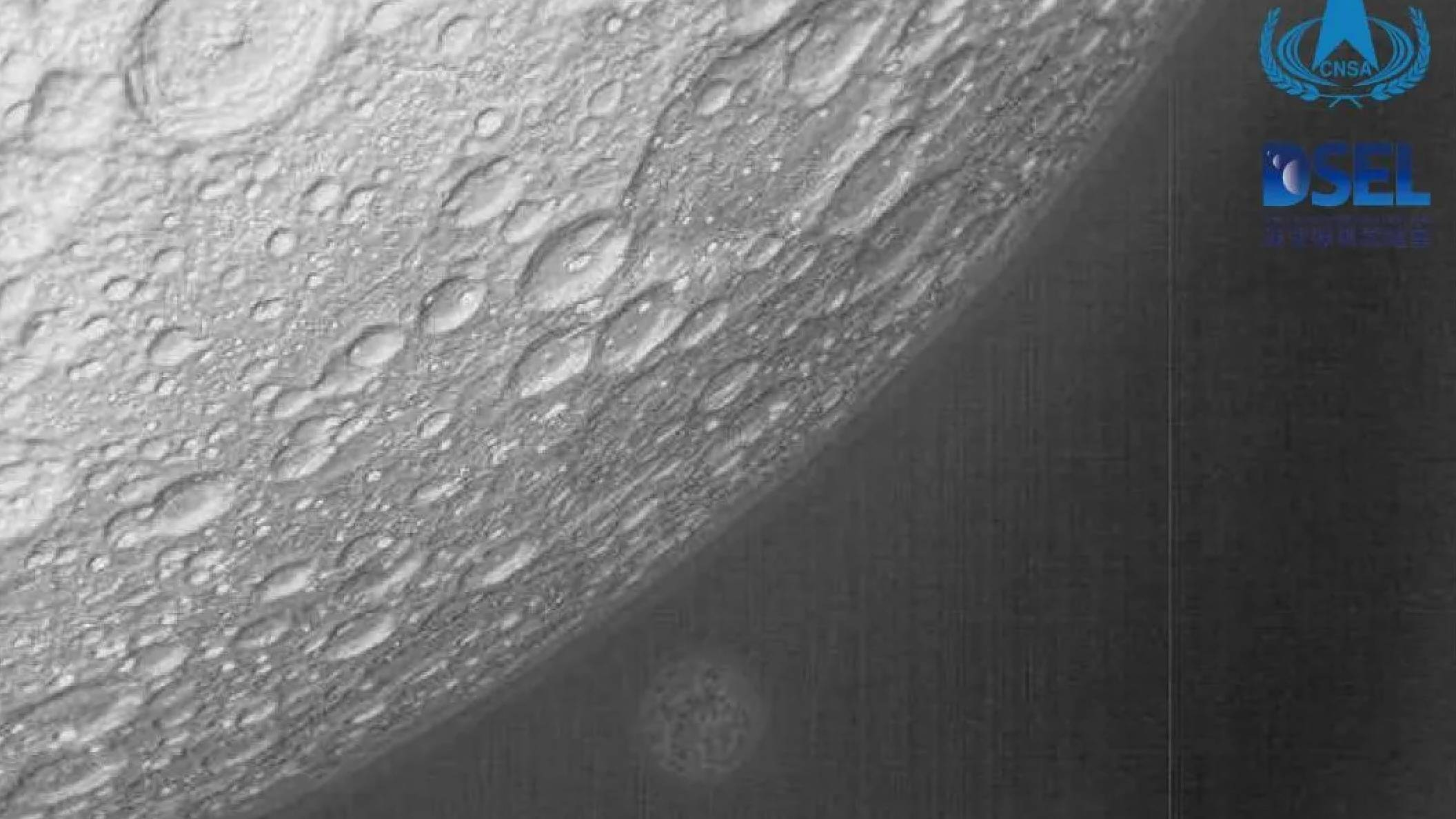
A pair of small experimental satellites have begun tests related to future lunar communication and navigation services for China's moon ambitions.
The Tiandu-1 and Tiandu-2 satellites launched toward the moon along with the Queqiao-2 lunar communications relay satellite on a Long March 8 rocket on March 19. The latter spacecraft will support a major mission — the upcoming Chang'e 6 lunar far side sample return effort, which could launch as soon as next month —but the former are intended as a pathfinder for future lunar infrastructure.
China's Deep Space Exploration Lab (DSEL) stated on April 13 that Tiandu-1 and Tiandu-2 had carried out tests of high-reliability transmission and routing between Earth and the lunar surface.
Related: China to launch 1st-ever sample return mission to moon's far side in 2024

One of the pair also transmitted an infrared image showing the heavily cratered far side of the moon, including a view of a distant planet Earth.
The Tiandu pair entered lunar orbit on April 3 and are flying in formation around 124 miles (200 kilometers) apart. Tiandu-1 weighs 134 pounds (61 kilograms) and is equipped with a Ka-band dual-frequency communicator, a laser retroreflector and a space router. Tiandu-2 weighs 33 lbs (15 kg) and carries communication and navigation devices.
DSEL stated that the test satellites will conduct further lunar communication and navigation technology experiments. The results will guide the design and construction of the planned International Lunar Research Station (ILRS) and a Queqiao satellite constellation for lunar communication, navigation and remote sensing.







